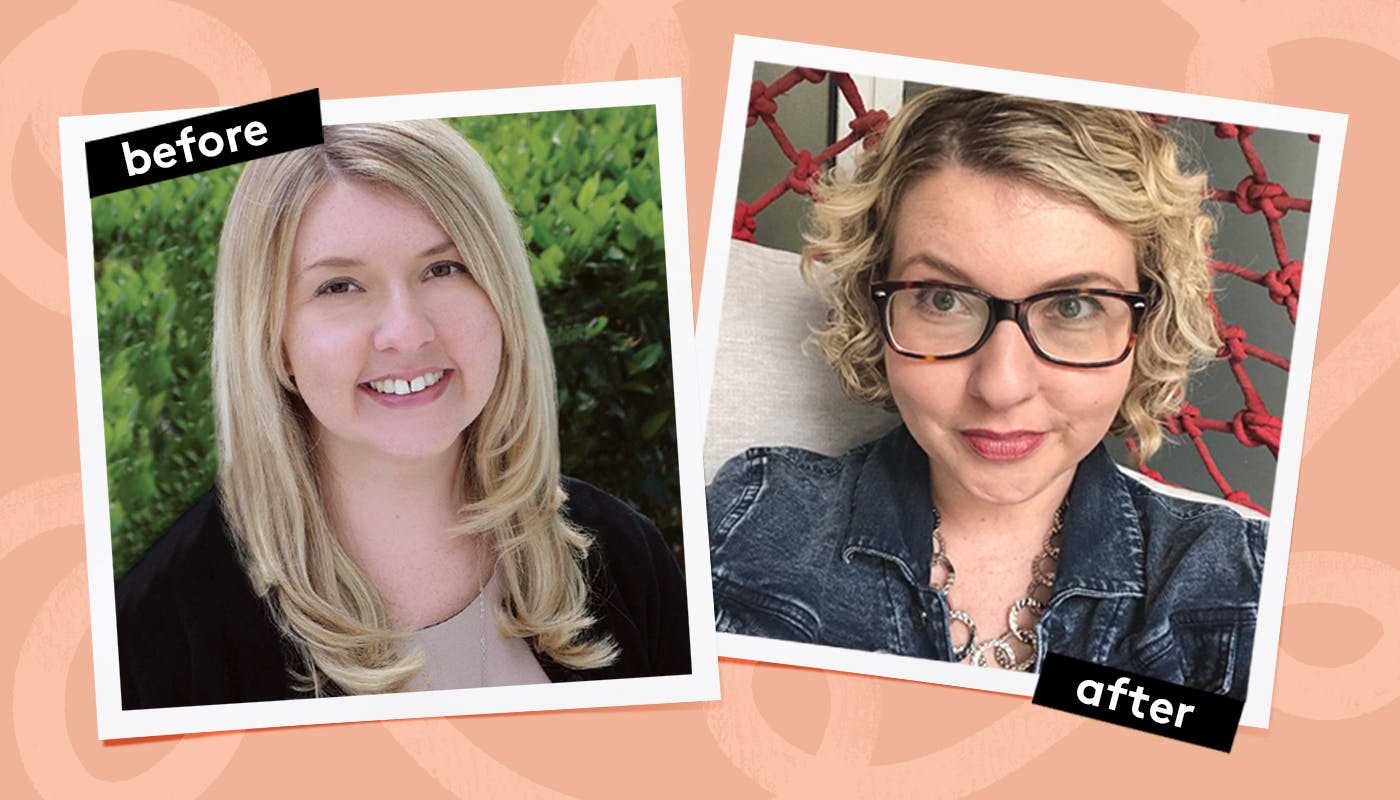September 28, 2018
What My Chemo Curls Taught Me About Life

Ive always been really into my hair.
Even as a kid, good hair days were a goalwhich is why I usually adorned my hair with banana clips, hair bows, or some other awful 80s accessory. I was lucky enough to have pretty good hair, too: long and thick, with just the slightest wave. In high school, flush with after-school-job cash, I started getting professional haircuts (including, Im sad to admit, the Rachel). From there, I fell down the rabbit hole of experimenting with cuts, colors, fancy shampoos, and styling products.
Though I had the normal teenage insecurities about other aspects of my appearance, my hair was a source of confidence. It made me feel pretty even when the rest of my body was a hormonal mess.
Then, when I was 37, I was diagnosed with Stage II breast cancer. On the day of my initial oncology appointment, my doctor explained what my treatment program would entailsurgery, radiation, chemotherapy. Chemo: Of all the terrifying things he said that day, this was the word that made my stomach drop. Id seen loved ones suffer through the side effects of chemo, like the nausea, the weight loss, nerve damage, debilitating fatigue, infertility and, yes, losing their hair.
Perhaps even more than losing my breasts, I dreaded losing my hair. While so many women in my position have trouble grappling with mastectomiesand admittedly, I did, tooI was still far more concerned with my hair. Even though my oncologist assured me it would grow back, the thought of losing it all and starting over from nothing sent me reeling. It would take years to get my long hair back.
I know it sounds incredibly silly to worry about something so trivial considering I was facing a life-threatening disease and major surgery to remove parts of my body. But I never really derived any self-confidence from my pretty-average breasts.
But my hair? That was a totally different story. So much of my self-esteem and femininity were wrapped up in what was on top of my head. I was terrified of losing such an important part of my physical identityand beyond the vanity of it, I dreaded looking like a sick person.
The strands started falling out slowly at first, then clumps at a time. Id wake up each morning and leave a nest of my hair on the pillow. About a week after it started falling out, my toddler accidentally yanked a clump out, leaving a bald spot along my part. I instantly lost it. Then I begged my husband to buzz what hair I had left.
Newly shorn, I looked in the mirror at the patchy stubble on my scalp. With my hair intact, Id been able to live in a weird state of denial that I was sick. But seeing my bald head, there was no mistaking I was a cancer patient.
But I survived both the cancer and the months of baldness. And, just as my oncologist promised, a layer of downy peach fuzz began to sprout from my scalp shortly after my last treatment. As it got longer, I began to notice the texture was differentmy slight waves were more like curls, and it felt coarser.
They call them chemo curls. The effects of the drugs linger in the body for months, altering the cells in the hair follicles. After chemotherapy, many cancer patients experience noticeable changes in the hair that regrows once treatment ends, such as different texture, color, and thickness.

I hadnt anticipated my hair coming back in such a different way. I was thrilled to have hair, but I felt cheated that I didnt get the hair I hadand lovedbefore cancer. My first instinct was to try to straighten it, so I got a thin-barreled brush and a teeny-tiny straightener. But my hair was still far too short for a blowout, and I ended up with a poofy mess. I realized I would have to just surrender to the curls.
Since Ive had mostly straight hair all my life, I had no idea how to handle the spirals. So I perused Pinterest and consulted with curly-haired friends for tips on taming my out of control regrowth. I learned some tricks to keep the frizz at bay, like using smoothing serums and avoiding regular shampoos in favor of paraben- and sulfate-free products designed specifically for curly hair, like the DevaCurl line. I learned that these productsparticularly the lather-free shampoodo a better job of keeping my hair hydrated and smooth. I also became a fan of headbands and bobby pins, as both were critical in keeping my short, super-curly hair from puffing up like a bad clown wig.
Each stage of regrowth brought its own set of challenges, and there were times I would get so frustrated with my curls that Id just give up and throw on a hat. On those days, I really resented having curly hair I didnt ask forit was just one more reminder that something terrible had happened to me.
But a weird thing began to happen. People who didnt know me or that Id had cancer began complimenting me on my hair. In my mind, the curls werent mebut to these people, I was just another seemingly healthy person with curly hair. Id been so focused on trying to tame my curls, on making them yet another thing to work through, that I never stopped to just enjoy them.
Sure, those curls represented the most difficult, frightening experience of my life. But they also represented what I was able to overcome. My curls were tangible reminders of my strength, the physical embodiment of a second chance at life.
So yes, my curls still drive me crazy sometimesbut I know that if I can handle cancer, I can handle a bad hair day.
-Jennifer Bringle